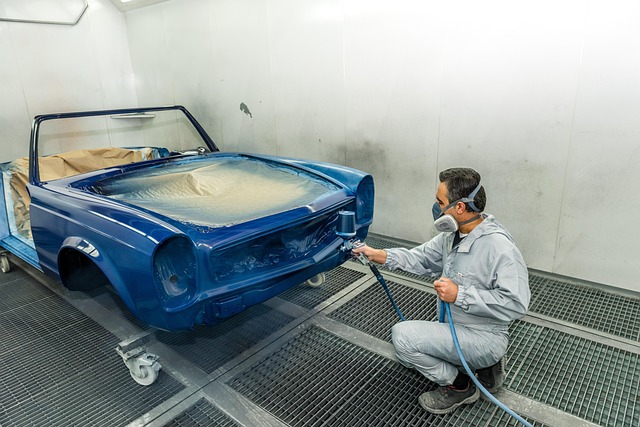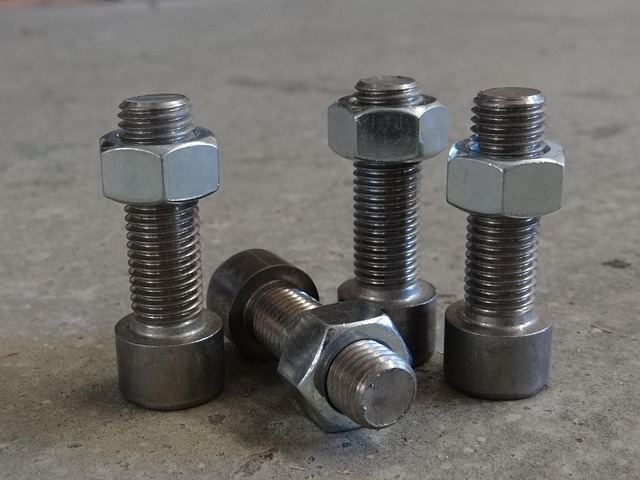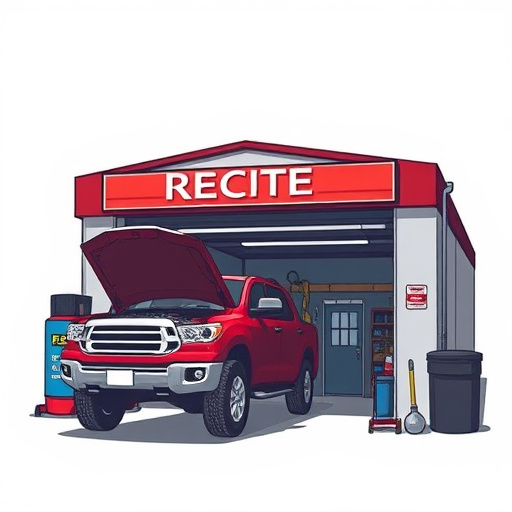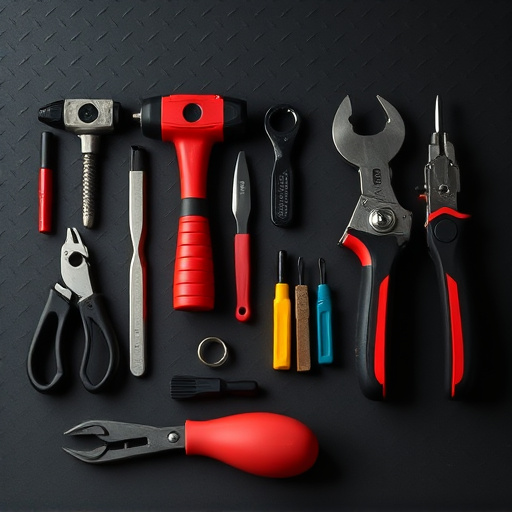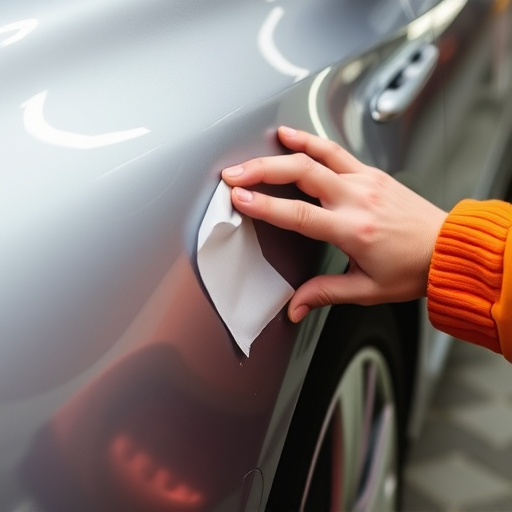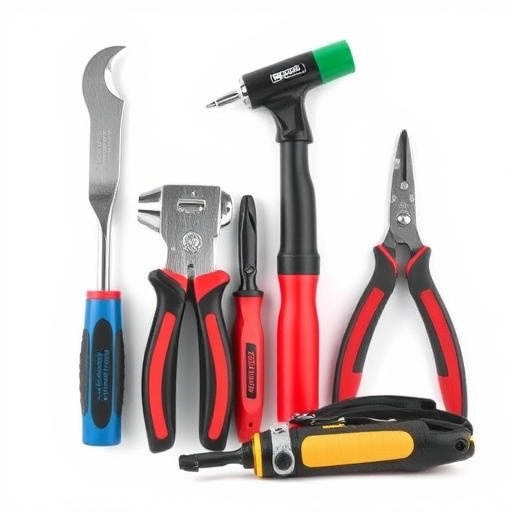The evolution of modern repair equipment, especially in automotive sectors, reflects remarkable human ingenuity and technological advancements. Historically laborious and imprecise repairs, such as early 20th-century bumper fixes, have been transformed by specialized tools that enhance efficiency, precision, and safety standards. Today's versatile and high-performance repair equipment, including automated systems and computer-aided design software, revolutionizes auto body services, streamlining operations, improving quality, and benefiting both businesses and customers.
In today’s fast-paced world, understanding the advantages of modern repair equipment is crucial for any industry. The evolution from traditional to modern repair methods has significantly transformed operational efficiency. This article explores the historical perspective of repair technology, highlighting key advancements and their impact. We delve into the specific benefits of investing in modern repair equipment, including increased productivity, enhanced safety features, and cost savings. Furthermore, we discuss future-proofing maintenance operations through adaptable, environmentally sustainable solutions, ensuring long-term success in an ever-changing landscape.
- The Evolution of Repair Technology: A Historical Perspective
- – Brief overview of traditional vs modern repair methods
- – Advancements in technology and their impact on efficiency
The Evolution of Repair Technology: A Historical Perspective
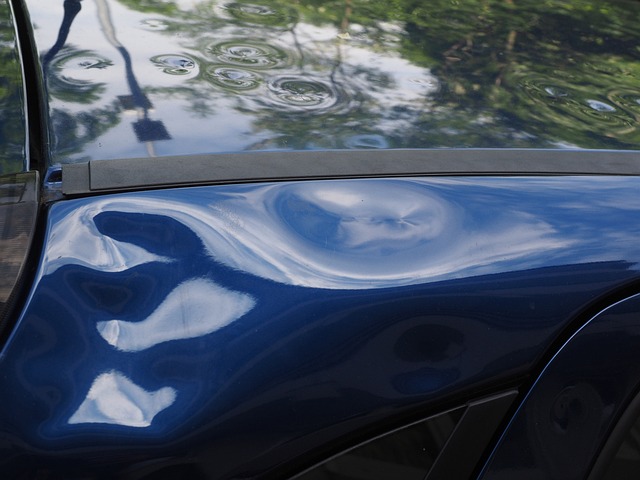
The journey towards modern repair equipment is a testament to human ingenuity and our relentless pursuit of progress. Historically, repairs were often a makeshift affair, with tools and techniques that were limited by the available resources. For instance, consider the laborious process of bumper repair in the early 20th century, where technicians would spend hours meticulously welding and straightening metal, a far cry from the efficient, precision-cut operations possible today.
Over time, technological advancements have transformed not only how repairs are done but also the very nature of the work. The introduction of specialized tools for tasks like car paint services has not only sped up the process but also improved the quality and consistency of finishes. Similarly, tire services have evolved from manual labor to include automated machines that ensure consistent performance and safety standards. Today, modern repair equipment is characterized by its precision, efficiency, and versatility, making it a game-changer in the automotive industry.
– Brief overview of traditional vs modern repair methods
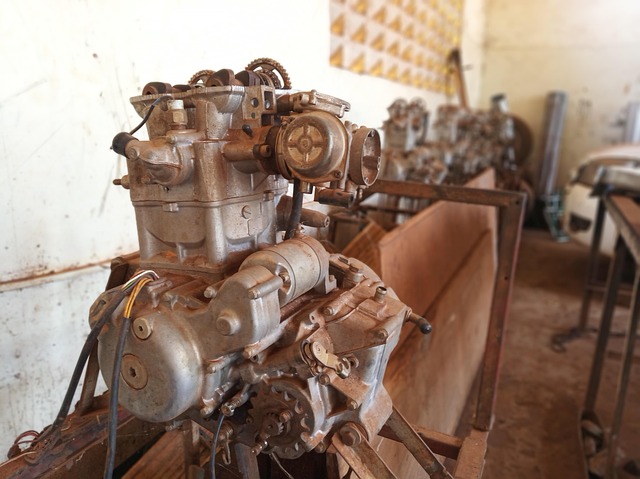
The approach to repairing vehicles has evolved significantly over the years, with a notable contrast between traditional and modern repair methods. Traditionally, automotive body shops relied on manual labor and rudimentary tools for car collision repairs, often resulting in lengthy turnaround times and less precise outcomes. However, with advancements in technology, modern repair equipment has emerged as a game-changer in the industry.
Modern repair equipment offers numerous advantages, particularly in specialized areas like bumper repair. These innovative tools provide greater precision, ensuring that every detail is accurately restored to pre-collision condition. For instance, advanced welding machines and computer-aided design software enable faster and more effective bumper restoration, reducing the time a vehicle spends in the workshop. This not only benefits customers but also allows automotive body shops to handle a higher volume of repairs efficiently, contributing to improved operational effectiveness.
– Advancements in technology and their impact on efficiency

The evolution of technology has brought about remarkable changes in various industries, and the realm of repair equipment is no exception. Modern repair equipment leverages cutting-edge innovations to enhance efficiency, precision, and productivity across diverse sectors, particularly within auto body services. Advancements like automated systems, sophisticated sensors, and digital control mechanisms have revolutionized traditional repair processes.
For instance, modern bumper repair technology now employs robotic arms for seamless and consistent panel alignment, significantly reducing manual labor and potential errors. Similarly, advancements in auto painting techniques utilize computer-aided robots to ensure even coating distribution, minimizing wastage and achieving impeccable finishes. These technological leaps not only streamline operations but also contribute to the overall quality of auto body services, setting new standards for repair efficiency and customer satisfaction.
Modern repair equipment has revolutionized the way we approach fixing and maintaining various systems, offering significant advantages over traditional methods. The evolution of repair technology, characterized by innovative tools and machinery, has enhanced efficiency, precision, and productivity in numerous industries. By embracing these advancements, businesses can streamline their processes, reduce downtime, and ultimately provide superior service to their customers. Investing in modern repair equipment is a strategic move that keeps operations up-to-date, competitive, and resilient in an ever-changing technological landscape.

